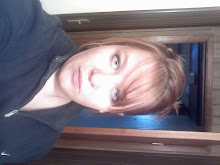
The Greeks called lightning the "thunderbolt" and depicted it as a jagged line of energy hurled by Zues to dazzle and intimidate human beings. There was some truth embedded in the myth; though lightening is one ofnature'smost thrilling and brilliant phenomenon, for centuries it was deeply feared as a fire starter in lands where most buildings were constructed of highly combustable wood. The problem plagued mankind until the 18th century, when Ben Franklin;s lightning rod tamed the terror from the sky.
For those interested in lightning, there is plenty of room for a new Frankin; scientists still do not fully understand its complex mechanisms. We know, for example, that most lightening begins when clouds acquire electric charge, or become ionized, with the upper portion usually being positive and the bottom negative. We still do not understand in full the forces that drive the charging of the air. One one point, however, there is no doubt: this ionized air is highly conductive adn provides a pathway for lightning to flow to earth.
A strike occurs when an ionized column of air connects two areas with opposite charges, which are always attracted to each other. As the ionized air extends its force outward in the form of negatively charged "stepped leaders," the earth responds to this strong electrical field by sending "positive streamers" upward. When a stepped leader meets a positive streamer, a current flows between cloud and earth in the form of plasma, dischargingenergy ina familiar one-two punch: Flash!...BOOM! The thunderbolt's exchange of energy produces high heat - that is the lightning flash. The explosion also creates a shockwave that we hear as a sonic boom - that is the thunder. The delay between the two is science that anyone can understand: everyday proof that light travels far faster than sound.
FACTS:
Lightning bolts are hotter than the sun's surface
Lightning strikes the earth about 100 times every second
Lightning kills about 100 people in the US every year (only slightly fewer than how many die in flash floods
I always want to spell it lightening rather than lightning
Lightning strikes are more common in warm, humid areas - the equator tends to get the most electrical storms
The most lightning prone region on earth is the Democratic Republic of Congo
In the US, central Florida recieves the most...afternoon thunderstorms occur almost daily









1 comment:
Lightning is gorgeous. (And a little scary at the same time.)
And I agree, it seems to BEG to have an extra "e" in the spelling.
(Also, previous post? That haboob is FREAKY! ... And I fear that one will come around immediately after the next time I wash my car.)
(Because, obviously, the world revolves around ME. :P)
Post a Comment